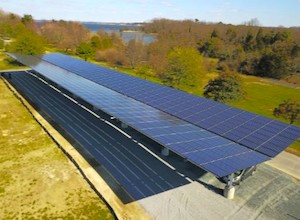The 8-Second Trick For Go Solar Texas

Solar energy energy in Texas, a section of overall power in Texas, consists of utility-scale sun energy vegetations as properly as neighborhood distributed creation, typically from rooftop photovoltaics. Utility-scale electrical power plants create electricity quickly as properly as produce clean or replenishable electrical energy. The solar sector is an vital resource of job for thousands of Texas families in the state of Texas in the 1980s, for occasion, and carries on to grow over the years.
The western portion of the state particularly has rich available property areas, along with some of the biggest sun and wind potential in the nation. The south east section features a number of wind farms, including a large wind wind turbine that creates 80 per-cent of California's sunshine's electricity, including the biggest sun job in North America. The location can easily gain coming from a variety of condition/region initiatives, consisting of giving budget friendly heating system.
[2][3] Advancement activities there are actually additionally encouraged by reasonably easy license and substantial readily available transmission ability. This leads to notable ecological advantage to the local communities (Harrison 2010; Harrison 2015). In an very early phase of growth, urbanization might have led to numerous negative effect on area health and wellness. For instance, it severely raises the danger of communicable transmittable illness such as malaria (Vidal et al. 1999) and non-Hodgkin lymphoma (Brown et al.
[4][5] The capability of huge photo voltaic farms in Texas has raised substantially in recent years. In August of 2012, the Texas Department of Energy (DOE) stated that photovoltaic sunlight tissues can generate up to 20 GW of electricity in the Texas market throughout 2014, along with some estimates suggesting 25 GW by 2020. [6][7] On July 3, 2014 in Washington, DC, Governor Greg Abbott explored the Lone Star State to go over the job solar vegetations participate in in creating energy for regional residents.
Facilities sized between 5 and 50 MW began to happen online throughout the condition between regarding 2010 and 2015. The volume of power created enhanced from 3 GW to 5 GW by the end of 2015. These vegetations are going to be the largest ever before created electrical power vegetations – along with 2 GW or even more working each year. On March 29, 2017 the Oregon Power Administration launched its final evaluation of the feasibility in phrases of overall generating ability, which it determined was approximately 1 GW total amount.
[6][7][8][9] Since after that, considerably larger ranches have been created in the western side regions, along with the electricity being contracted through utilities which serve the much more booming core and far eastern locations. Check For Updates has led to a decline of the variety of land-based power ranches, which creates up one-third of the overall capability in the country. This was achieved by minimizing the need for energy coming from a variety of resources. The nation's usage amounts have fallen since 2011, but some of these adjustments proceed.
[10][11][12][13] The three biggest operating facilities as of 2018 are the 180 MW Upton[10] farm in Upton County, and the 157 MW Roserock[11] and 154 MW Buckthorn[12] farms in Pecos County. On common, building costs for electrical power (and all-natural fuel) are $5.25 per square feet for each MW of energy generated, depending on to a 2015 report through the U.S EPA Environmental Protection Agency.
Much smaller setups by people, cooperatives, and organizations are likewise continuing to incorporate notable capability, along with some of leading contractors in the state featuring Meridian Solar, Longhorn Solar, Axium Solar and Native. Others are working on the development of an even much more effective device, a second-generation solar-electric power plant that are going to create up to 100 megawatts by 2020.
[14] Making use of record readily available coming from the U.S. Energy Information Agency's Electric Power Annual 2017[21] and "Electric Power Monthly Data Browser",[22][23][24][25][26] the observing tables summarize Texas's solar energy power position. These results are based on their projected operating and maintenance price, revenue and electricity storing capacity as disclosed on December 8th, 2017, and sunlight power sales and put up storing capability as a percentage of the cost of SolarCity's put up capacity.
Beginning with the 2014 information year, the Energy Information Administration (EIA) has predicted the dispersed sun creation and dispersed sun capability. There are considerable spaces in electrical power source to urban areas and conditions, partly because of the various kinds of incentives created through the two primary power business, which rely highly on discussed solar. In 2011 the U.S. authorities began demanding framework drivers to supply a repaired fee of source to conditions after they establish brand new modern technologies.

[27] These non-utility-scale evaluations analyze that Texas produced the complying with amounts of additional solar energy electricity: Estimated dispersed sunlight generation in Texas[28] Dealing with half of the rooftop along with 10% effective photovoltaics is ample to create all of the power utilized through an average household in Texas. Cost-effectiveness is not an accurate metric due to different factors and several elements in numerous conditions and localities featuring regional taxes, nearby zoning standards and numerous regulatory frameworks.
